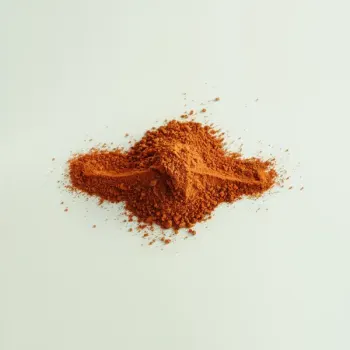Pepper and Chili Powder are spices with distinct flavors; pepper adds sharpness and subtle heat to dishes, while chili powder offers complex smokiness and varying heat levels. They are used differently in cooking to enhance meat, vegetables, sauces, and marinades.

Pepper, often referring to black pepper, is the dried fruit of the Piper nigrum vine. Known for its sharp, pungent flavor and subtle heat, pepper is a universal spice that enhances the overall taste profile of dishes.

Chili powder is a blend of ground chili peppers and other spices such as cumin, garlic powder, and oregano. It offers a complex flavor profile with varying degrees of heat, smokiness, and depth, commonly used in Latin American and Tex-Mex cuisines.
While both pepper and chili powder add heat to dishes, pepper provides a sharpness that enhances existing flavors, whereas chili powder brings its own distinctive smoky notes. Pepper is a single spice, and chili powder is a mix, which also affects their versatility and use in recipes.

Your ultimate Recipe Box, Meal Planner, and Cooking Class all in one
Pepper is ideal for steak, roasts, and chicken, providing a classic, peppery crust that complements the natural flavors of the meat. Use coarsely ground pepper for a more pronounced taste and texture. Chili powder suits barbecue rubs and chili con carne, offering warmth and complexity. It pairs well with bold flavors and can stand up to longer cooking times without losing its character.
Freshly cracked pepper is a simple way to elevate roasted vegetables, salads, and soups, adding a bite that contrasts with the natural sweetness of veggies. Chili powder works well in vegetable stews, stir-fries, and as part of marinades for grilled vegetables, adding a warm color and a complex flavor profile.
Black pepper is perfect for white sauces, peppercorn sauces, and as a finishing spice for creamy dressings, where its flavor can be a star without overpowering. Chili powder is a go-to ingredient for enchilada sauces, barbecue sauces, and marinades where a smoky depth and heat are desired.
Both pepper and chili powder contain capsaicin, which is known for its anti-inflammatory properties.
| Nutrient | Pepper ( per Teaspoon ) | Chili Powder ( per Teaspoon ) |
|---|---|---|
| Fat | 0.1g | 0.4g |
| Sodium | 0.6mg | 9mg |
| Calcium | 10mg | 7mg |
| Protein | 0.2g | 0.4g |
| Calories | 5 | 8 |
| Carbohydrates | 1.4g | 1.4g |
They can be used to adjust heat, but keep in mind that chili powder will introduce additional flavors that may change the recipe's taste profile.
Chili powder's heat depends on the type of chili used; some can be hotter than black pepper, while others are milder.
No, pepper also adds heat. To reduce spiciness, you might want to use less of either spice or add a sweet or dairy component to counterbalance the heat.
Both spices have health benefits, including anti-inflammatory properties. The choice should be based on flavor preference and dietary needs.
Dishes that benefit from layered heat, such as chili, stews, and meat rubs, can be enhanced by both spices.